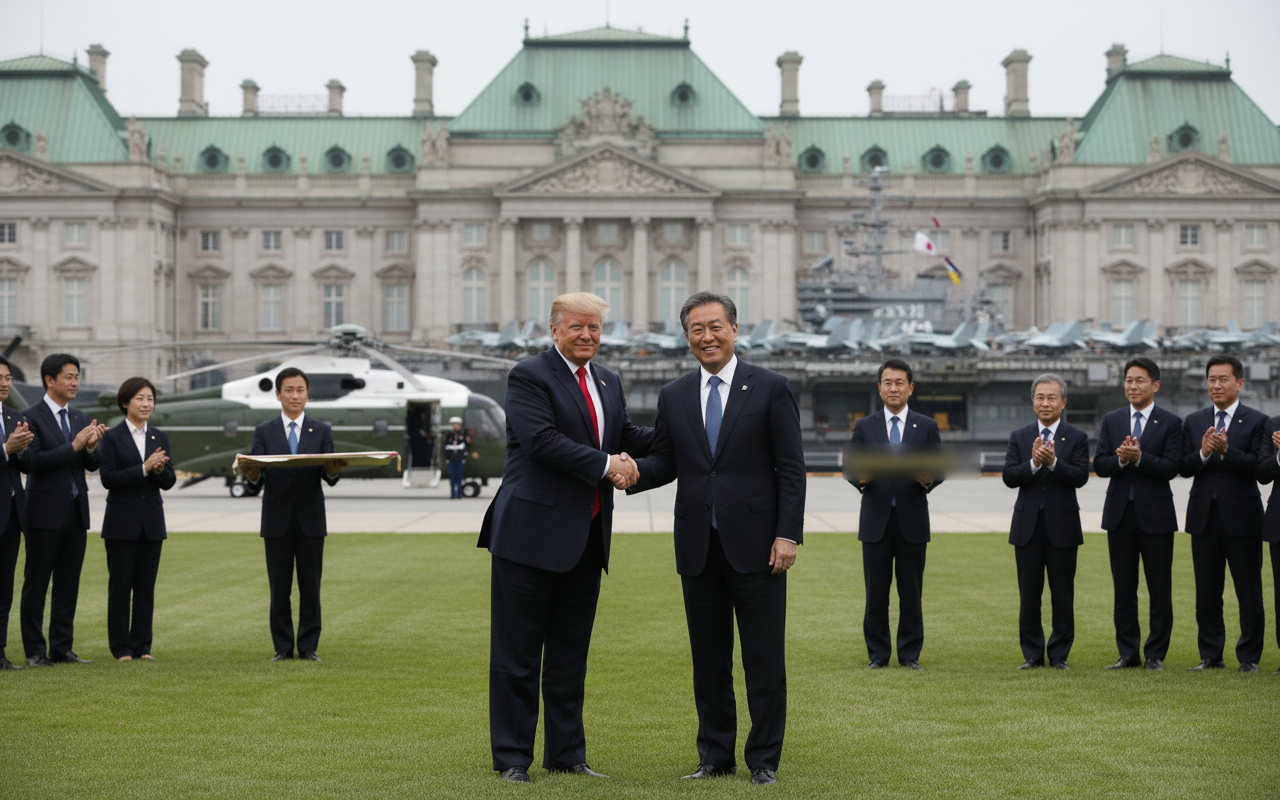Trump and Takaichi Affirm 'Strong and Great Alliance' at Summit

Trump and Japanese Prime Minister Takaichi Reaffirm Strong U.S.-Japan Alliance in Tokyo Meeting
U.S. President Donald Trump and Japanese Prime Minister Sanae Takaichi held a historic summit at the State Guesthouse in Motoakasaka, Tokyo on October 27, 2025. The meeting underscored the importance of the bilateral relationship and provided an opportunity to explore joint responses to the global security environment. It was particularly significant as it marked the first direct meeting between Trump and Takaichi. The summit proceeded in a consistently friendly atmosphere, with both leaders engaging in in-depth discussions on various issues based on mutual trust. Trump emphasized in his opening remarks that "we (the U.S. and Japan) are allies at the strongest level," reaffirming the solid U.S.-Japan alliance. This statement clearly demonstrates how crucial the two nations are to each other amidst the current international climate. Trump added that "U.S.-Japan relations will become stronger than ever," suggesting further development in bilateral ties.
Japanese Prime Minister Sanae Takaichi echoed the importance of the U.S.-Japan alliance. Takaichi described the alliance as "the greatest alliance in the world," stating that the two nations will cooperate together on the global stage to contribute to world peace and prosperity. Takaichi specifically mentioned Japan's intention to "contribute to world peace and prosperity together," demonstrating Japan's willingness to play an active role in the international community. This statement signals Japan's commitment to participating more actively in resolving international issues in line with the changing security environment. These remarks by both leaders reaffirmed that the U.S.-Japan alliance is not just a bilateral relationship but a key pillar contributing to global peace and stability.
The summit reaffirmed the commitment to strengthening the U.S.-Japan alliance. Both leaders agreed to further enhance the alliance to jointly address the current security environment and global challenges. Specifically, they agreed to promote cooperation in various fields, including information sharing, military cooperation, and economic cooperation. They also discussed regional affairs, including North Korea and China, as well as international issues, and agreed to make joint efforts to ensure stability in the region. Regarding North Korea's nuclear and missile threats, both nations agreed to cooperate closely in responding. They also expressed shared concerns about China's military expansion and agreed to strengthen diplomatic efforts to ease tensions in the region. These discussions demonstrate the shared goals and cooperative approach of the U.S. and Japan in maintaining regional stability.
Key agenda items included the issue of Japan's defense spending, which the U.S. is requesting to be increased, and Japan's $550 billion investment in the U.S. following the U.S.-Japan trade agreement. Regarding defense cost-sharing, both nations agreed to understand each other's positions and find common ground at a reasonable level. Discussions on Japan's investment in the U.S. were conducted in a way to further strengthen economic cooperation and promote mutual benefits. These economic issues demonstrate that the U.S.-Japan alliance is closely cooperating not only in the security field but also in the economic sphere. Following the summit, both leaders shared a luncheon and engaged in deeper conversations. The luncheon provided an opportunity to reconfirm the topics discussed at the summit and to discuss specific ways to further develop bilateral relations. The amicable atmosphere of the luncheon further solidified the trust between the two leaders.
After the summit, both leaders boarded the U.S. presidential helicopter 'Marine One' and moved to the U.S. Navy base in Yokosuka. Together, they boarded the U.S. nuclear-powered aircraft carrier USS George Washington, once again demonstrating the strength of the U.S.-Japan alliance. This gesture is a symbolic representation of the strong military alliance between the two nations and their close cooperation for mutual security. In particular, boarding the U.S. nuclear-powered aircraft carrier demonstrates the powerful U.S. military and reaffirms the U.S. security commitment to Japan. The meeting between Trump and Takaichi reaffirmed the importance of the U.S.-Japan alliance and served as a crucial opportunity to further develop bilateral relations. Both nations are expected to strengthen cooperation in various fields and achieve common goals on the global stage in the future.
